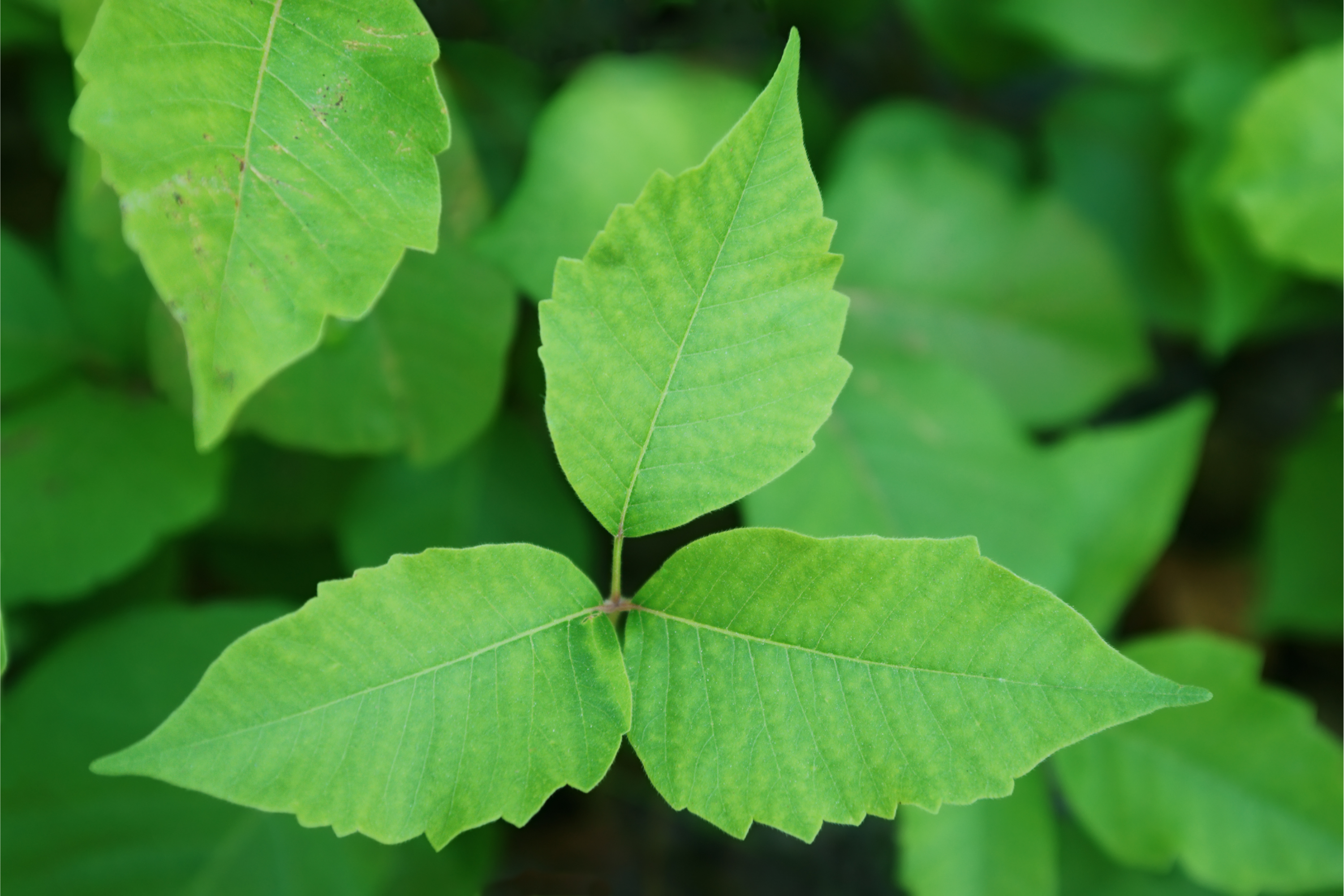Poison ivy
(Toxicodendron radicans)

Description
Toxicodendron radicans, commonly known as poison ivy, is a highly adaptable and widely distributed plant species that belongs to the family Anacardiaceae. This species is native to North America, where it is found in a wide range of habitats, from moist woods and swamps to dry, rocky areas. Poison ivy is a perennial plant that can grow as a trailing vine, a low shrub, or a climbing vine that can reach heights of up to 30 meters. In this article, we will explore the various aspects of Toxicodendron radicans, including its morphology, distribution, ecology, and toxicity. Morphology: Toxicodendron radicans has a distinctive morphology that can help identify it in the field. It has three leaflets that are arranged alternately on a stem, giving the plant a compound leaf appearance. Each leaflet is 3-12 cm long and 2-6 cm wide, with a glossy, dark green upper surface and a paler green, slightly hairy underside. The edges of the leaflets are typically toothed or lobed, and the tips may be pointed or rounded. The stems of the plant are typically hairy, and they may be reddish or green in color. Toxicity: One of the most well-known aspects of Toxicodendron radicans is its toxicity. The plant produces a resin called urushiol, which can cause an allergic reaction in most people who come into contact with it. The urushiol is present in all parts of the plant, including the leaves, stems, and roots. It can be transmitted through direct contact with the plant or indirectly through contact with clothing or other objects that have come into contact with the resin. The allergic reaction to urushiol can manifest in a variety of ways, including itching, redness, swelling, and the development of fluid-filled blisters. The severity of the reaction can vary depending on the amount of urushiol that comes into contact with the skin, as well as the individual's sensitivity to the resin. In severe cases, the reaction can be debilitating and require medical treatment. Distribution: Toxicodendron radicans is distributed widely throughout North America, from Canada to Mexico. It is particularly common in the eastern United States, where it is found in a variety of habitats, from forests to open fields. The plant is less common in the western United States, where it is typically found in riparian areas and other moist habitats. Poison ivy can also be found in parts of Central America and the Caribbean. Ecology: Toxicodendron radicans plays an important role in the ecology of many habitats where it is found. It is an important food source for many animals, including birds and mammals that feed on its berries. The plant also provides shelter and nesting sites for many species. Poison ivy is particularly important for soil conservation, as it helps to stabilize soil and prevent erosion. Despite its importance in the ecology of many habitats, Toxicodendron radicans is often viewed as a nuisance plant due to its toxicity. The plant can be difficult to control, and its presence can limit recreational activities in areas where it is found. Control: Controlling Toxicodendron radicans, or poison ivy, can be challenging due to its ability to regenerate from its root system and its tolerance of a wide range of environmental conditions. The most effective way to control the plant is through manual removal or the use of herbicides. Manual removal: Manual removal involves pulling the plant out by the roots or cutting it back and treating the stump with herbicide. When manually removing poison ivy, it is essential to wear protective clothing, including gloves, long sleeves, and pants, to prevent contact with the urushiol resin. Care should also be taken to remove the entire root system to prevent the plant from regrowing. Herbicides: Herbicides that are effective against poison ivy include glyphosate and triclopyr. These chemicals are typically applied as a spray or brush directly onto the leaves of the plant. It is essential to follow the manufacturer's instructions carefully when using herbicides and to avoid spraying the chemicals on other desirable plants. It is important to note that repeated applications of herbicides may be necessary to control the plant fully. Additionally, the use of herbicides can have environmental impacts, and care should be taken to minimize their use and follow best practices for their application. Overall, controlling Toxicodendron radicans requires a combination of manual removal and the use of herbicides. It is important to take appropriate precautions when removing or treating the plant to prevent exposure to the urushiol resin and to minimize the environmental impact of control methods.
Taxonomic tree:







